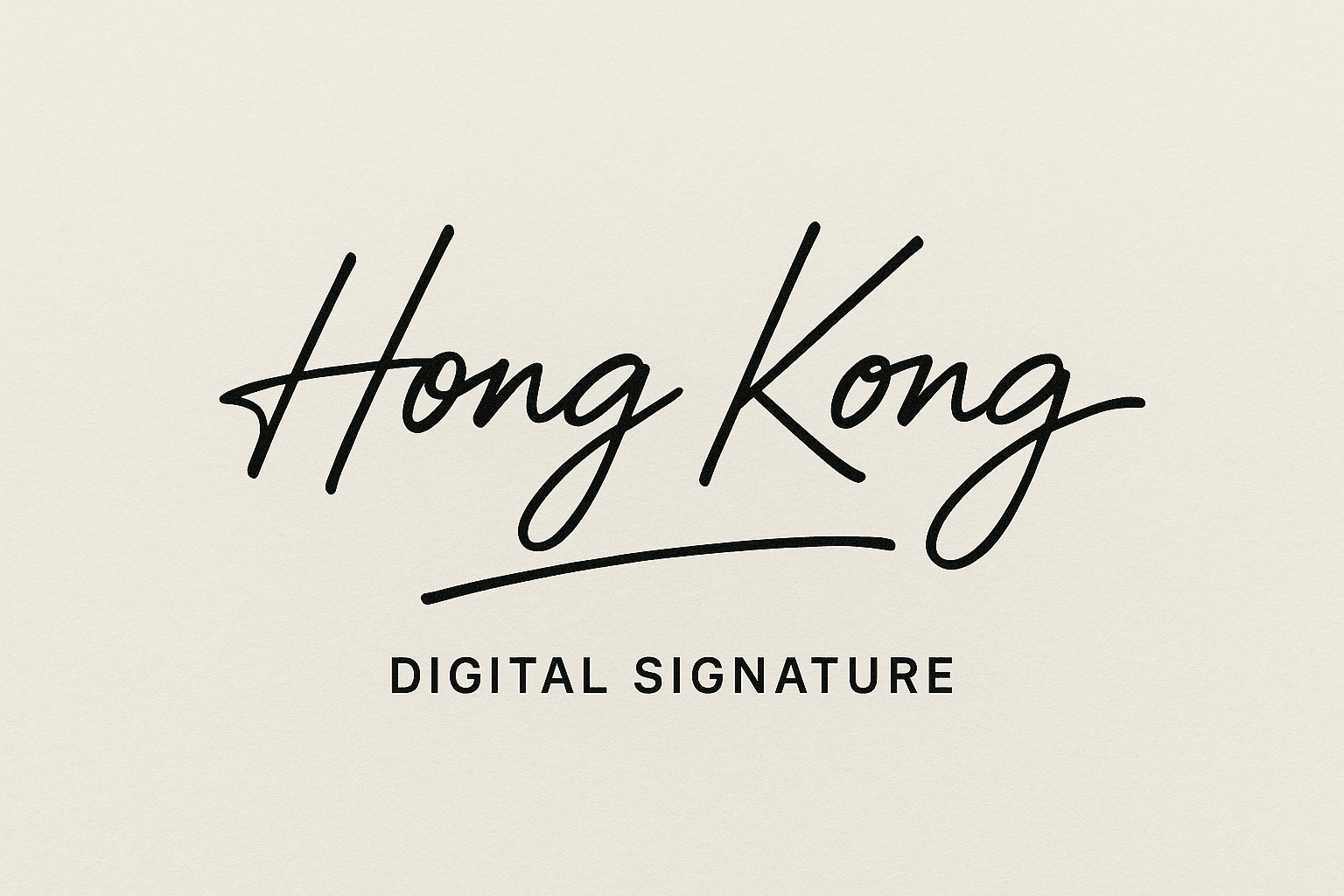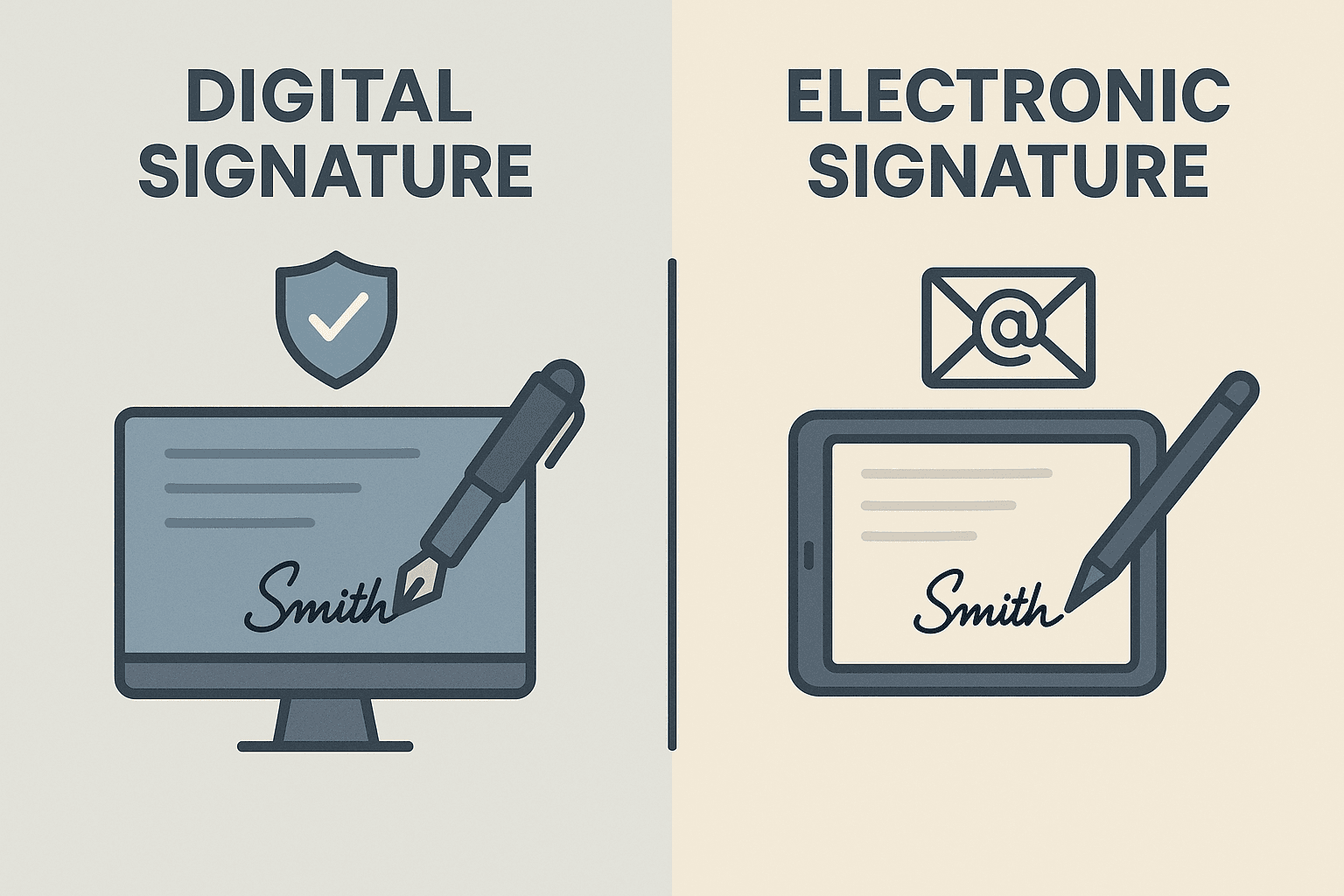WhatsApp or email with our sales team or get in touch with a business development professional in your region.
A Guide for Hong Kong Businesses: Choosing Between Digital and Electronic Signatures





Amid the wave of digital transformation, electronic signatures and digital signatures are often conflated. While both serve the shared goal of paperless operations, they differ fundamentally across key dimensions—legal enforceability, security architecture, technical composition, and industry application. In Asian markets—especially China and Southeast Asia, where data compliance is increasingly prioritized—understanding the distinction is no longer a task reserved for technologists; legal, IT security, contract management, and executive decision-makers all need to be aligned.

Understanding Electronic Signatures: Flexibility with Regulatory Trade-offs
An electronic signature (e-signature) is an umbrella concept that spans methods from clicking “I agree” to uploading an image of a handwritten signature. Operationally it is highly convenient—low friction and broadly adaptable—and is widely used in most B2C contracts and low-risk transactions, notably in e-commerce, online education, and HR services.
However, that flexibility comes with uneven regulatory expectations. Legally, under China’s Electronic Signature Law and analogous e‑transactions statutes worldwide, an e‑signature is typically valid if the method can reasonably identify the signer and evidence intent. The challenge is that “electronic signature” does not prescribe a specific technical standard, creating inherent weaknesses in evidence-chain completeness, security, and identity traceability.
In highly sensitive domains—financial services, healthcare, and public-sector services—the evidentiary strength of e‑signatures is often challenged in litigation. For example, in a contract dispute where no asymmetric cryptography was used, a mouse-drawn signature or scanned image usually fails to provide non-repudiation and tamper evidence, limiting suitability in high‑compliance industries.

Digital Signatures: An End-to-End, Cryptography-Driven Trust Framework
Rather than a mere “signing method,” a digital signature is best described as a comprehensive, cryptography-based assurance mechanism. Built on PKI (Public Key Infrastructure), it uses asymmetric cryptography to achieve the three core objectives of the signing process: non-repudiation, integrity, and authentication.
Each signing operation generates a document hash, encrypts it with a private key, and binds it to the signer’s public key. Any alteration of the original file is immediately detected at verification. In several Asian jurisdictions with strong GDPR influence (e.g., South Korea, Singapore), digital signatures are regarded as the gold standard for compliant cross-border data exchange and issuance of financial instruments.
Many digital-signature platforms also integrate trusted timestamping, providing a precise signing time for the legal evidence chain—indispensable for time-sensitive clauses and execution points in financial instruments.
Evaluating Use Cases Within Legal Frameworks
Across Asia, e‑transaction regimes implicitly tier e‑signatures versus digital signatures. For example, China’s Electronic Signature Law recognizes the legal effect of e‑signatures in general but grants stronger evidentiary presumptions to “reliable electronic signatures”—essentially those that meet digital-signature criteria.
Accordingly, when designing signature architecture for contract execution and data‑exchange flows, assess the following dimensions:
- Data security tier: Use digital signatures for critical contracts, confidential agreements, and financial instruments.
- Litigation exposure: Where documents may enter judicial proceedings, prioritize cryptographic signatures with a complete evidence chain.
- Systems integration & scalability: If enterprise systems support PKI, digital‑signature deployment will be smoother.
- Compliance maturity & cross-border readiness: For enterprises expanding internationally, digital signatures align more naturally with EU eIDAS and ASEAN e‑authentication interoperability.
Practical Considerations When Building a Signature System
A persistent challenge in digital‑signature rollouts is technical cost and user learning curve. PKI deployments often require hardware-backed keys and a certificate authority (CA) and can feel more cumbersome from a UX perspective. By contrast, e‑signatures are low‑barrier and fast to implement, with high user acceptance online.
Hence the prevalence of hybrid models on local platforms: prioritize e‑signatures in UX‑sensitive B2C flows, while steering high‑value scenarios (e.g., contract approvals, bank guarantees) toward digital‑signature modules.
Across Asian internet ecosystems, many providers partner with licensed CAs to deliver integrated signature services for SMEs—lowering deployment thresholds while retaining compliance strength at critical control points.
Conclusion: More Than a Signing Method—It’s the Design of a Trust System
At every critical touchpoint in the digital economy, signature mechanisms are fundamentally about transmitting trust. E‑signatures offer natural advantages in convenience and speed, while digital signatures establish higher thresholds for technical trust, legal defensibility, and closed‑loop security.
For enterprises, selecting the right mechanism based on business criticality, data sensitivity, and legal risk tolerance is not just an implementation choice—it is a strategic milestone in digital governance and compliance. As Asian markets deepen compliance and align on technical trust, this “signature debate” will continue to shape the contract lifeline across industries.

Shunfang
Head of Product Management at eSignGlobal, a seasoned leader with extensive international experience in the e-signature industry.
Follow me on LinkedIn
Get legally-binding eSignatures now!
30 days free fully feature trial
Business Email
Get Started
 Only business email allowed
Only business email allowed
Latest Articles


